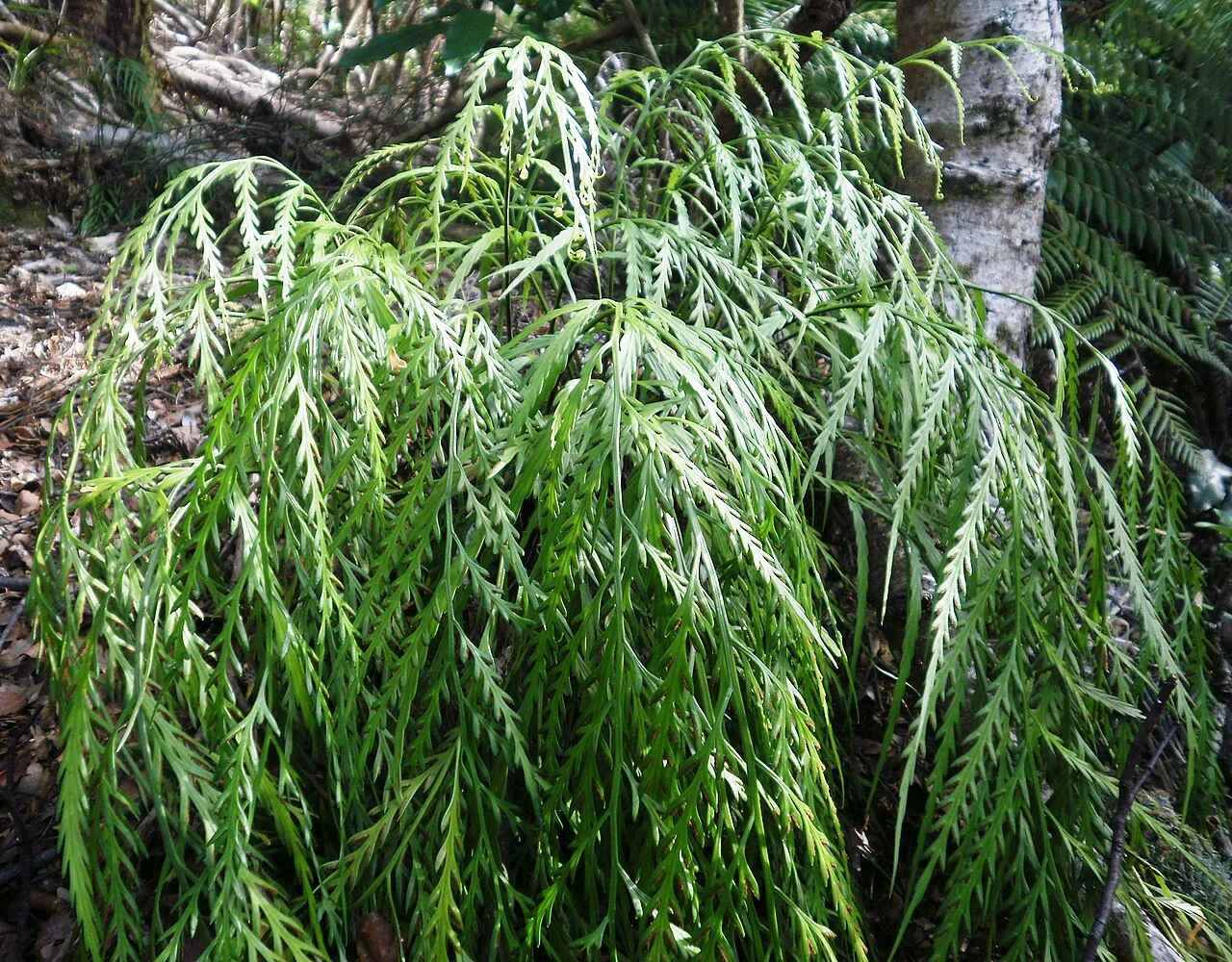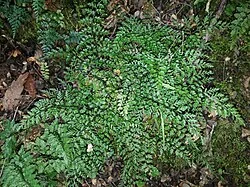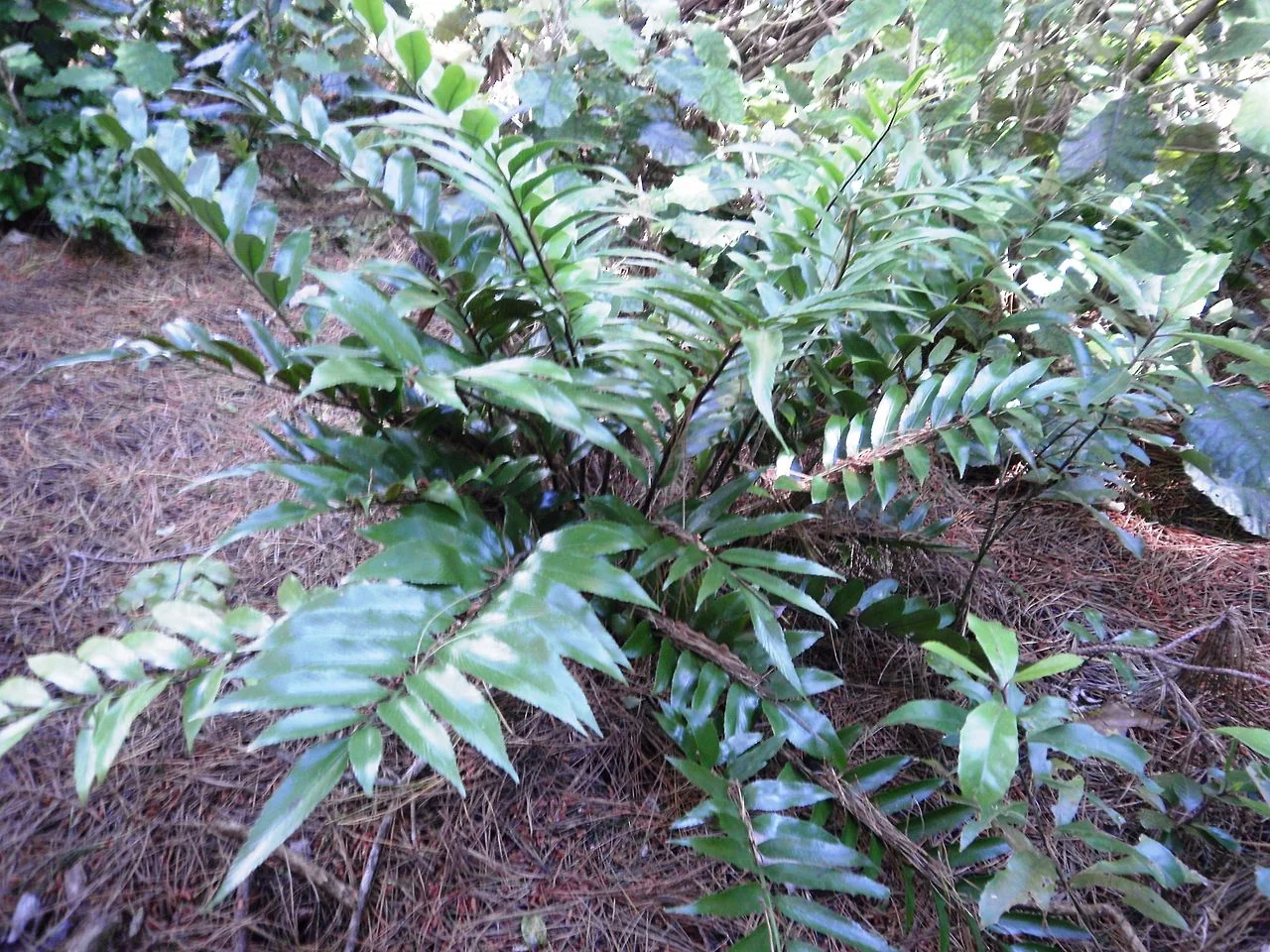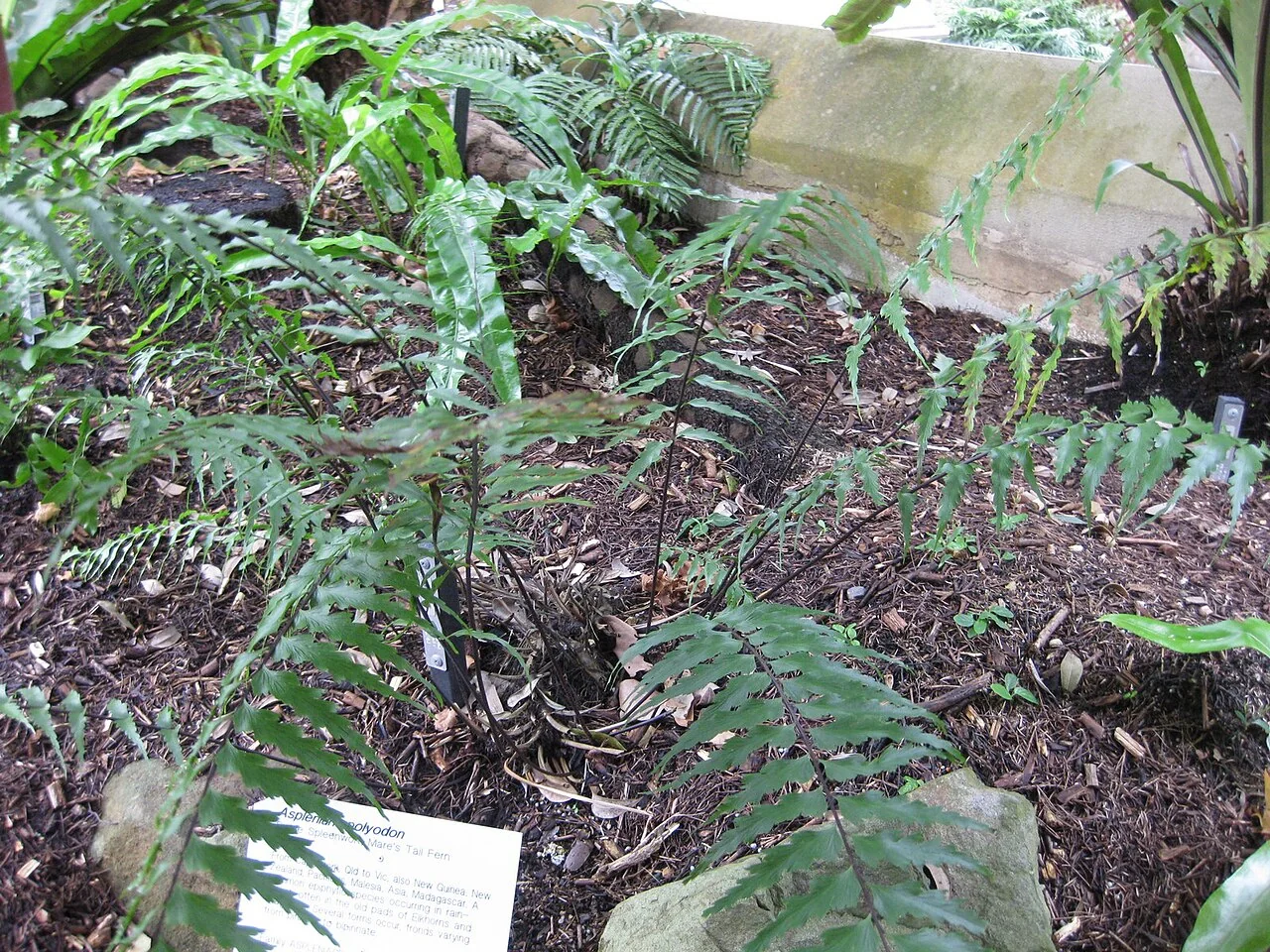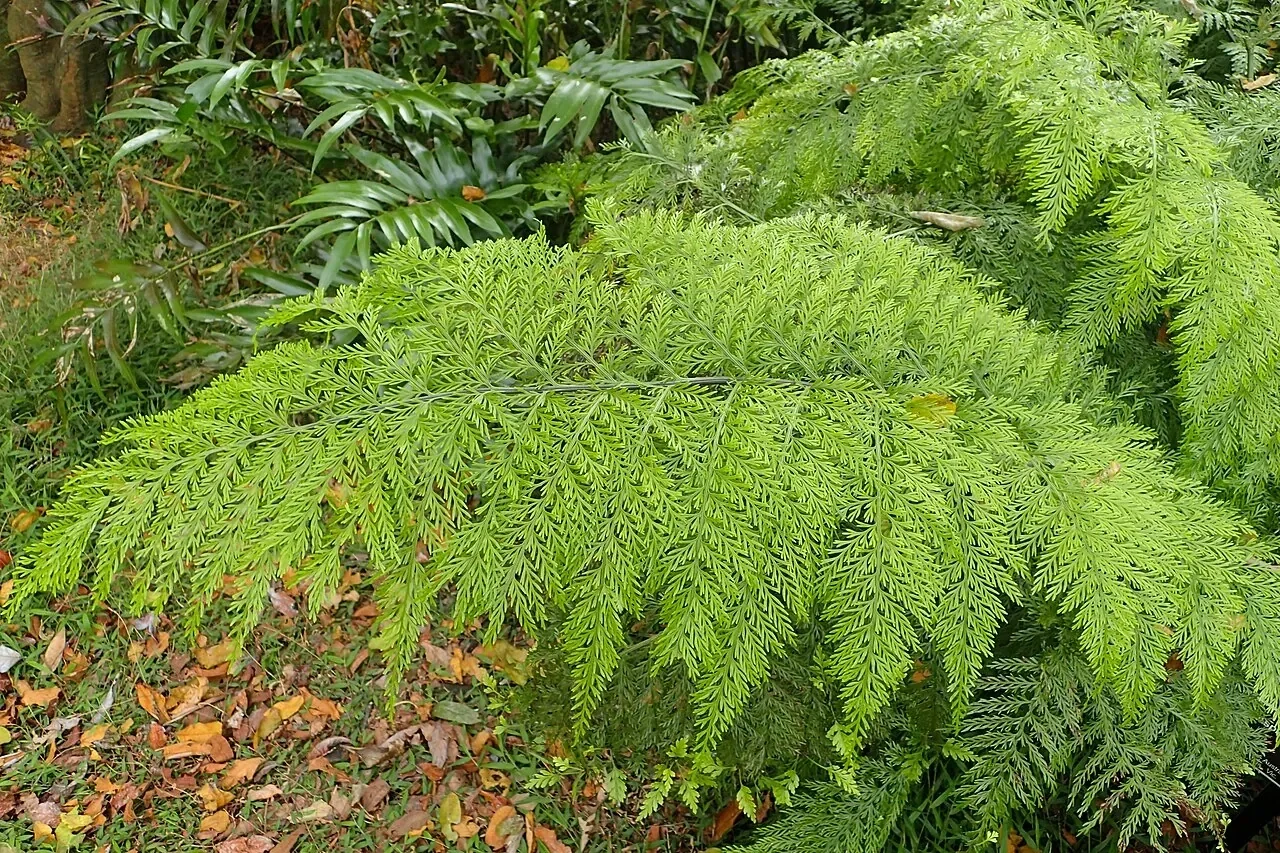
Hen
Asplenium bulbiferum
Introduction
Overview
Hen and Chickens Fern ( Asplenium bulbiferum ) is a lush, attractive native fern of New Zealand, known for its arching fronds and the small plantlets ("chickens") that grow on them. It thrives in moist, shaded environments and is popular in gardens for its ornamental value and ease of propagation. Learn more about New Zealand ferns .

Plant Description
Botanical Features
Hen ( Asplenium bulbiferum ) is a distinctive native plant with unique botanical characteristics that make it well-suited to New Zealand's diverse environments. This species exhibits typical features of its genus and family, with specialized adaptations that allow it to thrive in its natural habitat. The plant 's morphological features, including its leaf structure, growth habit, and reproductive characteristics, reflect millions of years of evolution in New Zealand's isolated environment. Understanding the botanical description of Hen helps gardeners appreciate its unique characteristics and provides insight into its cultivation requirements and ecological role.
Quick Facts
| Scientific Name | Asplenium Bulbiferum |
|---|---|
| Height | Up to 1 m (fronds) |
| Spread | 1-1.5 m (clumping habit) |
| Water Needs | High; prefers consistently moist soil |
| Light | Dappled to deep shade (tolerates some morning sun) |
| Frost Tolerance | Moderate (tolerates light frost, protect from severe frost) |
| Salt Tolerance | Low (not tolerant of coastal salt) |
| Growth Rate | Moderate to fast |
| Lifespan | Perennial (long-lived in suitable conditions) |
Hen and Chickens Fern is native to the forests of New Zealand, where it thrives in cool, moist, sheltered environments. It is found throughout the country in suitable habitats, particularly in damp, shaded areas of native bush. It prefers areas with consistent moisture and protection from direct sunlight and drying winds.
Regional Suitability
| City | Climate Suitability |
|---|---|
| Whangārei | Ideal |
| Auckland | Ideal |
| Hamilton | Ideal |
| Tauranga | Ideal |
| Rotorua | Ideal |
| Gisborne | Ideal |
| New Plymouth | Ideal |
| Napier | Ideal |
| Whanganui | Ideal |
| Palmerston North | Ideal |
| Wellington | Ideal |
| Nelson | Ideal |
| Christchurch | Ideal |
| Dunedin | Ideal |
| Invercargill | Ideal |
Natural Habitat
Typical Environments
Asplenium is naturally found in specific habitats throughout New Zealand. Understanding its natural environment helps in providing appropriate growing conditions in cultivation.
Plant Conservation
Threats and Efforts
Renga Renga Lily ( Arthropodium cirratum ) holds a national conservation status of "Not Threatened" in New Zealand, reflecting its widespread presence and adaptability. However, regional conservation statuses can vary, with some areas, like Auckland, classifying it as "At Risk - Regionally Declining." This highlights the importance of local conservation efforts even for nationally secure species.
Conservation efforts for Renga Renga often involve protecting its natural forest and riparian habitats from degradation, managing invasive species that could outcompete it, and promoting its use in native plant restoration projects. Its ease of cultivation and propagation makes it a valuable species for ecological restoration projects, particularly in coastal revegetation, and for promoting biodiversity in home gardens. The plant's historical use and translocation by Māori also underscore its resilience and cultural significance in the landscape. By supporting the protection of its natural environments and encouraging its cultivation, we contribute to the ongoing health and presence of this iconic New Zealand native.
Soil Requirements
Hen and Chickens Fern performs best in the following soil conditions:
- Rich, humus-filled soil
- Good moisture retention
- Well-draining but consistently damp
- Slightly acidic to neutral pH (5.5-7.0)
- Benefits from added leaf mold or composted bark
- Tolerates a range of soil types if moisture is adequate
Light Requirements
This fern prefers shaded conditions:
- Dappled to deep shade
- Protection from direct sunlight, especially midday sun
- Morning sun tolerated in cooler regions
- Ideal under canopy of taller trees or shrubs
- Can tolerate more light if soil remains consistently moist
- Avoid hot , dry, exposed positions
Water Requirements
Hen and Chickens Fern requires high moisture levels to thrive.
- Keep soil consistently moist, but avoid waterlogging.
- Water deeply when soil dries out, but allow it to dry slightly between waterings.
- In dry conditions, mist the fronds regularly to increase humidity.
- During winter , reduce watering slightly to prevent root rot.
Fertilization
Fertilize Hen and Chickens Fern in early spring and late summer.
- Use a balanced, slow-release fertilizer.
- Apply at half strength during the growing season.
- Avoid over -fertilizing, which can lead to excessive leaf growth and poor root development.
Planting Guide
Site Preparation
- Choose a shaded, sheltered site with rich, moist soil.
- Dig a hole twice the width of the root ball.
- Plant at the same depth as in the pot.
- Backfill and firm gently.
- Water well after planting and mulch to retain moisture.
Ecological Role
Wildlife Interactions
Asplenium plays an important ecological role in New Zealand's native ecosystems. It provides habitat and food for native wildlife and contributes to ecosystem health and biodiversity.
Garden Uses
Edible Uses
The young, unfurled fronds of Asplenium bulbiferum , known as "pikopiko" by the Māori people of New Zealand, are traditionally harvested and eaten. These young fronds, often called "bush asparagus," can be consumed raw or cooked and are a valuable food source. They are sometimes pickled and used in various cuisines, including salads, cheeseboards, and sandwiches, offering a unique, slightly bitter, asparagus-like taste.
Ecological and Cultural Significance
Beyond its ornamental and edible uses, Asplenium bulbiferum holds ecological and cultural importance. Its unique ability to produce small plantlets (bulbils) on its fronds, which can grow into new ferns, is a fascinating propagation method that gives it the common name "Hen and Chicken Fern." In New Zealand, it holds significant cultural value as a traditional food source for the Māori, and like many ferns, it contributes to air purification. Its presence in native bush areas, thriving in moist, shaded environments, highlights its role in the local ecosystem.
Landscaping Uses
Practical Applications
Asplenium is highly valued in landscaping for its aesthetic appeal and practical benefits. It can be used in various garden styles and landscape applications.
Spring
- New fronds emerge, keep soil moist
Summer
- Water regularly , avoid drying out
Autumn
- Remove old fronds, divide if needed
Winter
- Protect from frost, mulch base
Pruning
Pruning Techniques
Remove old or damaged fronds at the base as needed. Pruning is best done in late winter or early spring before new growth appears. Avoid cutting healthy fronds, as this can reduce the plant's vigor.
How to Grow Hen
Bulbils (Plantlets)
Bulbil propagation is the most distinctive and reliable method for growing Hen and Chickens Fern, taking advantage of the unique vegetative reproduction strategy that gives this species its common name. The mature fronds naturally develop small plantlets called bulbils on their upper surfaces, resembling tiny green "chickens" emerging from the "mother hen" frond. These bulbils are genetically identical clones of the parent plant and provide an extraordinarily simple propagation method that requires minimal intervention. As the bulbils mature, they develop small root systems while still attached to the parent frond, gradually increasing in weight until they naturally detach and fall to the ground when they reach approximately 5cm in size. To collect bulbils for propagation, monitor mature fronds during the growing season and gently remove well-developed plantlets that show visible root development but haven't yet fallen naturally. Plant bulbils immediately in small pots filled with a moisture-retentive but well-draining mix suitable for ferns, such as equal parts peat moss, leaf mold, and perlite. Press the tiny plants gently into the surface of the growing medium, ensuring the developing roots make good contact with the soil while leaving the small fronds exposed. Place containers in a humid, shaded environment with consistent moisture and protection from temperature extremes. Under suitable conditions, bulbils establish quickly and begin active growth within 2-4 weeks, developing into independent plants that can be transplanted once they reach 8-10cm in height. This method is particularly valuable because it preserves the exact genetic characteristics of superior parent plants and allows rapid multiplication for large-scale plantings or garden sharing. The ease and reliability of bulbil propagation make it ideal for both novice gardeners and commercial propagators seeking efficient fern production.
Division
Division provides an effective propagation method for established Hen and Chickens Fern clumps, particularly valuable when bulbils are not readily available or when rapid multiplication of mature-sized plants is desired. This terrestrial fern naturally forms expanding clumps through underground rhizome growth, creating multiple crown divisions that can be separated to form independent plants. The optimal timing for division is during spring when new growth is beginning to emerge, allowing divided sections to establish quickly in favorable growing conditions. Begin by carefully lifting the entire clump with a garden fork, working slowly to minimize damage to the delicate root system and emerging fronds. Once lifted, gently shake away excess soil to expose the rhizome structure and identify natural divisions where separate growing points have developed. Use clean, sharp knife or pruning shears to cut through connecting rhizomes, ensuring each division includes both healthy roots and at least one active growing point with emerging fronds. Divisions can be quite small, as this species establishes readily from minimal root material provided adequate moisture and protection are maintained. Replant divisions immediately in prepared soil enriched with organic matter, positioning them at the same depth they were previously growing. Choose locations with consistent moisture, protection from direct sunlight, and good air circulation to prevent fungal problems during establishment. Water thoroughly after planting and maintain consistent soil moisture throughout the establishment period, typically 4-8 weeks during favorable conditions. Mulch around new plantings with organic material to conserve moisture and suppress weeds while allowing adequate air circulation around the crown. This method is particularly useful for rejuvenating old clumps that may have developed bare centers, and for creating substantial instant plantings where immediate visual impact is desired rather than waiting for bulbils to develop into larger specimens.
Spores
Spore propagation represents the sexual reproduction method for true Asplenium bulbiferum specimens, though it requires significantly more skill, patience, and controlled conditions than the vegetative methods. This approach is primarily used by serious fern enthusiasts, botanists, and conservationists working with authentic New Zealand genetic material rather than commercial hybrids. True Asplenium bulbiferum produces viable spores in sori (spore clusters) on the undersides of mature fronds, typically ripening in late summer to autumn when the sori turn from green to brown. However, it's crucial to note that many plants sold commercially as A. bulbiferum are actually sterile hybrids (A. - lucrosum) created by crossing New Zealand A. bulbiferum with Australian A. dimorphum, and these hybrids cannot reproduce from spores. For authentic spore propagation, collect spores by placing mature fronds with brown sori in paper bags and allowing them to release spores naturally over several days. Sow fresh spores immediately on sterile, fine-textured growing medium in shallow containers, maintaining consistently high humidity and temperatures around 20-22°C. Cover containers with glass or clear plastic to maintain humidity while allowing some air circulation to prevent fungal growth. Germination is slow and irregular, typically taking several weeks to months for the initial prothallus stage to develop, followed by many more months for recognizable fern plants to emerge. The young plants require careful attention to humidity, light levels, and protection from contamination throughout their development. Spore-grown plants take 1-2 years to reach transplantable size and several years to achieve maturity. While challenging, this method is essential for maintaining genetic diversity in native plant conservation programs and produces plants with the full range of natural genetic variation rather than the clonal uniformity of vegetative propagation.
Pests and Diseases
Common Pests
Asplenium is generally resistant to most pests due to its native adaptations. However, it may occasionally be affected by common garden pests such as aphids or scale insects.
Disease Prevention
To prevent diseases, ensure good air circulation around Asplenium and avoid overwatering. Remove any diseased plant material promptly to prevent spread.
Cultural Significance
Traditional Uses and Values
The young, unfurled fronds of Hen and Chickens Fern ( Asplenium bulbiferum ), known as pikopiko, are a traditional Māori food. They were harvested and eaten both raw and cooked, providing a valuable source of nutrients. The plant was also used in rongoā (traditional Māori medicine).
Bonus Tip
Propagating from Bulbils
One of the most fascinating and easiest ways to propagate Hen and Chickens Fern ( Asplenium bulbiferum ) is by using its unique bulbils. These tiny plantlets, which resemble miniature ferns, grow directly on the mature fronds.
To propagate, simply wait until the bulbils are about 1-2 cm in size and have developed small roots. Gently detach them from the parent frond and plant them directly into a tray of moist, well-drained potting mix. Keep the tray in a humid, shaded spot, and within a few weeks, these "chickens" will grow into independent ferns. This method is incredibly rewarding and allows you to quickly expand your collection or share with friends.

